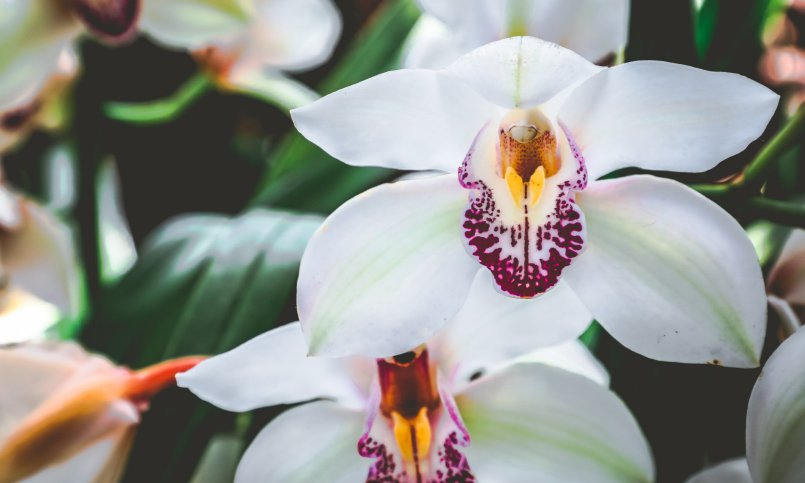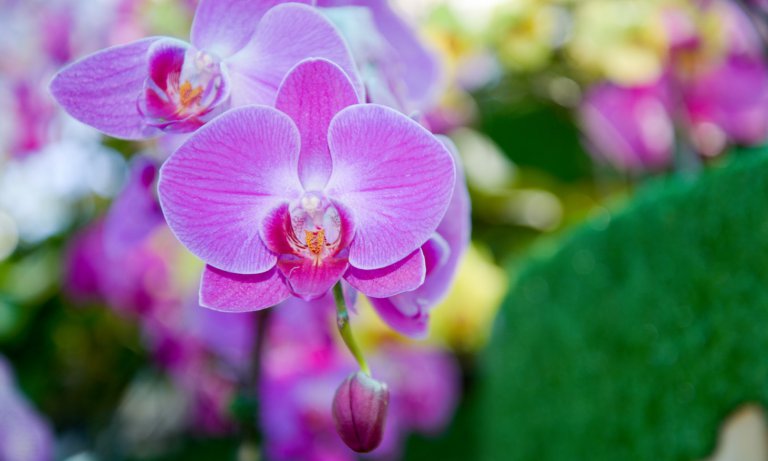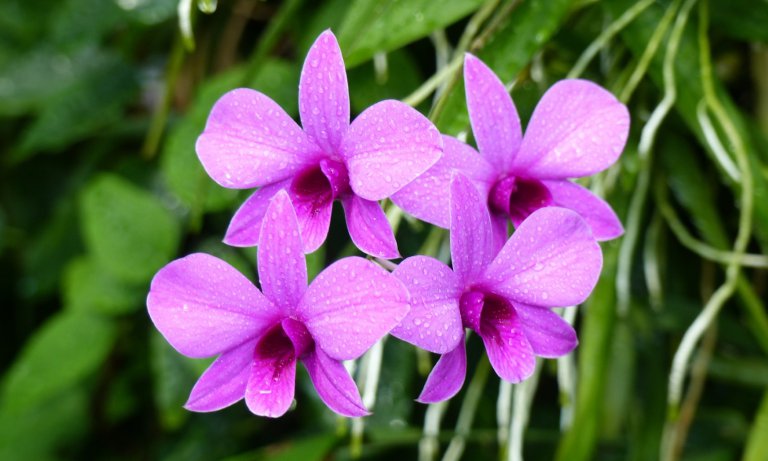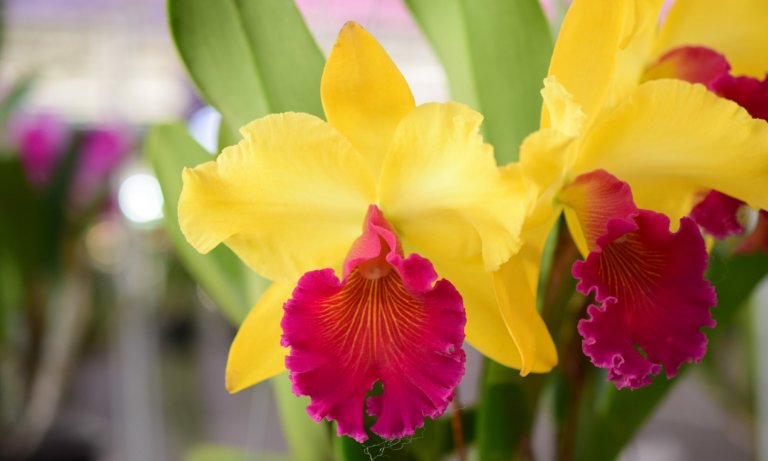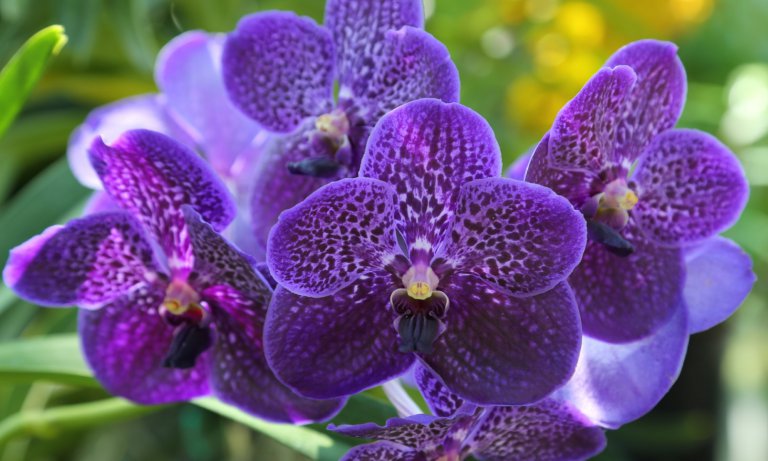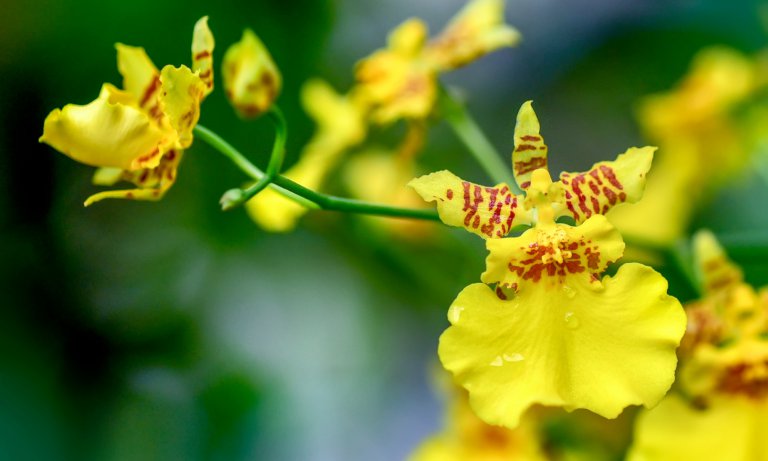Cymbidium orchids, more commonly known as “boat orchids” due to the shape of their flowers, are one of the most popular types of orchids for gardeners.
They’re available in a wide variety of species, so there are many options for orchid enthusiasts. They are also easy to care for and can even be grown outside in the right climate.
History and Cultivation
Cymbidium orchids are prized for their elegant beauty and the wide variety of colors they can be found in. Aside from being attractive houseplants or additions to the garden, they’re often used in cut flower arrangements or in corsages. One particular variety of boat orchid is also considered to be a delicacy in Bhutan.
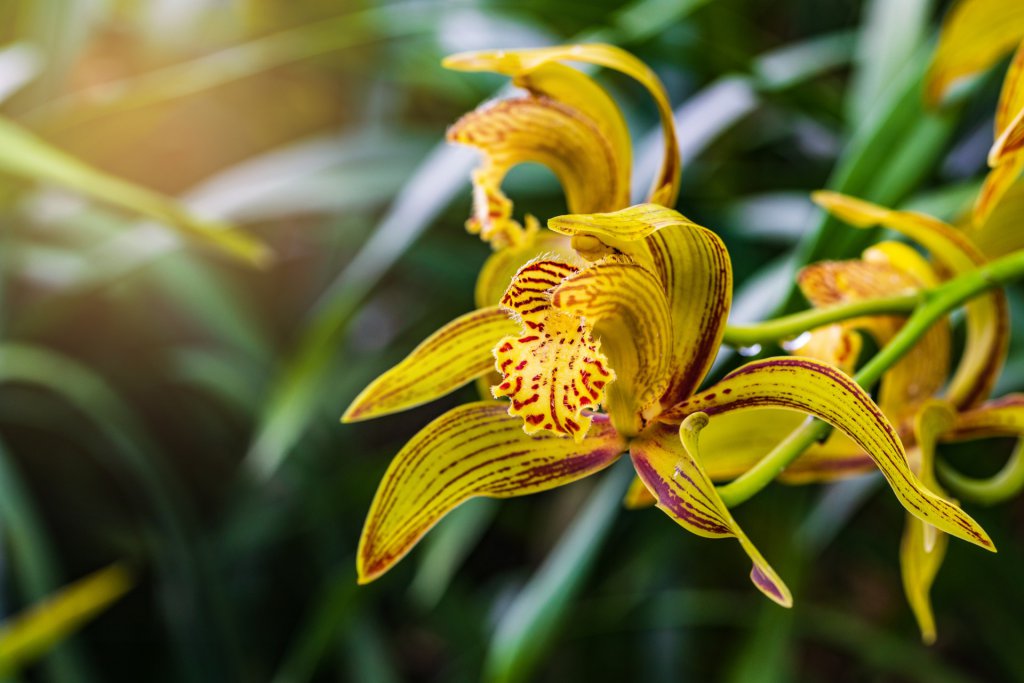
The boat orchid naturally appears in tropical and subtropical Asia, and Australia. It was first described by botanist Olaf Swartz in 1799. Boat orchids can have a life span lasting decades. However, the exact amount of time an orchid will live depends significantly on several factors. This includes the particular species, where the plant is grown, whether it’s introduced to any diseases, and how it’s cared for.
Appearance
Cymbidium orchids are easy to recognize by the shape of their flowers. Each petal is long and separated from the others. In the middle of the flower, the labellum looks like a cup or boat, giving the flower its name.
Boat orchids have long green leaves, and each stem will grow between 10 and 25 flowers at a time, making them very dramatic-looking plants. The stems themselves are long and pale green.
These orchids come in a wide range of colors. In fact, you can find them naturally in nearly every color except blue. Some of the most common colors are white, red, and yellow, with flowers in variegated forms of these colors being quite common and popular.
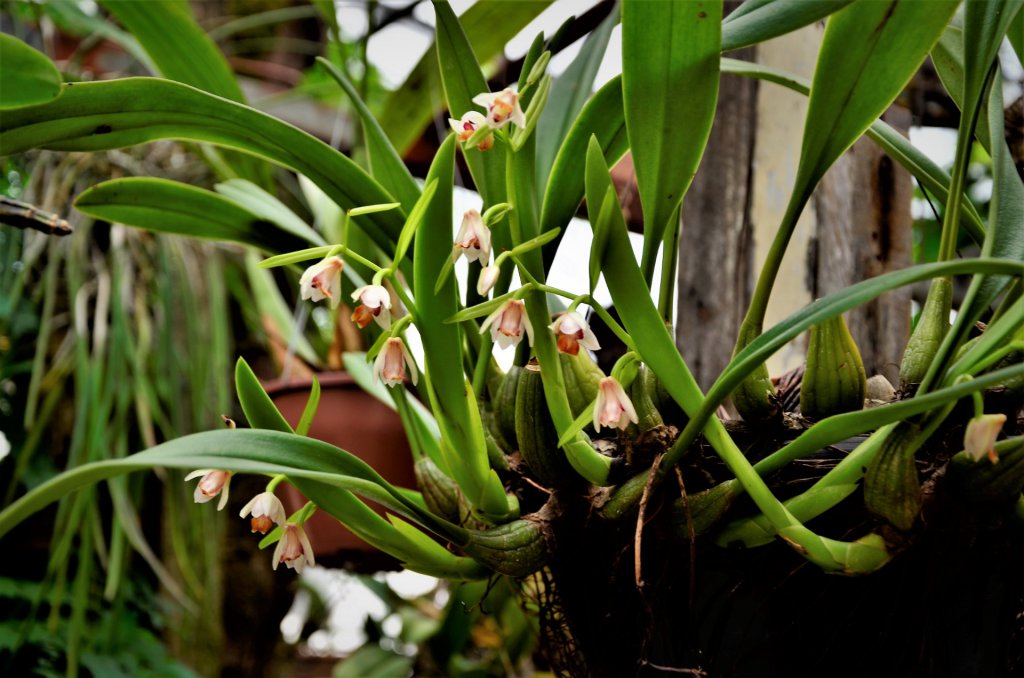
Cymbidium orchids exist in both standard size and miniature forms. Mini cymbidiums generally grow to only between four and eight inches in height, so they’re the perfect size for a smaller space. The flowers are tiny and very delicate, but the plants themselves aren’t as dependent on cold weather for their blooming cycle as the standard size varieties.
Cymbidium Varieties
Cymbidium aloifolium
- Also known as the aloe-leafed orchid
- Flowers are yellow and red
- Plants bloom in the summer and can produce up to 75 flowers
- Flowers are known to have a strong scent
Cymbidium kanran
- A variety of the Chinese cymbidium
- Also known as the cold-growing cymbidium, due to its habit of growing in cooler areas
- Flowers are usually greenish in color but can also have a red tinge
- Flowers are strongly scented
Cymbidium ensifolium
- Also known as the four-season orchid, rock orchid, and golden thread orchid
- Known to be heat tolerant
- Flowers range from two to three inches in size and are generally green or reddish-brown in color
Cymbidium lowianum
- Also known as Low’s cymbidium
- Flowers between January and April, with each stem producing up to 25 flowers
- Flowers are green to yellow in color, with a red V shape in the middle
Cymbidium dayanum
- Also known as Day’s orchid, the tree orchid, or the phoenix orchid
- Produces white and red flowers in a distinct triangular shape
- Blooms in November
Cymbidium Care
Cymbidiums, unlike many other orchid species, work well as an outdoor plant. If at all possible, it’s best to grow them outside from late spring to early fall.
Light & Temperature
Cymbidiums prefer warm temperatures—between 75 and 85 degrees Fahrenheit—during the day, and cooler temperatures at night. Night temperatures at around 50 to 60 degrees Fahrenheit are ideal. In fact, if standard sized cymbidiums are not exposed to cooler night temperatures, they may fail to bloom.
Boat orchids can tolerate light frosts and can survive temperatures as low as 35 degrees Fahrenheit. However, it is recommended that plants are brought inside when temperatures drop below about 40 degrees Fahrenheit.
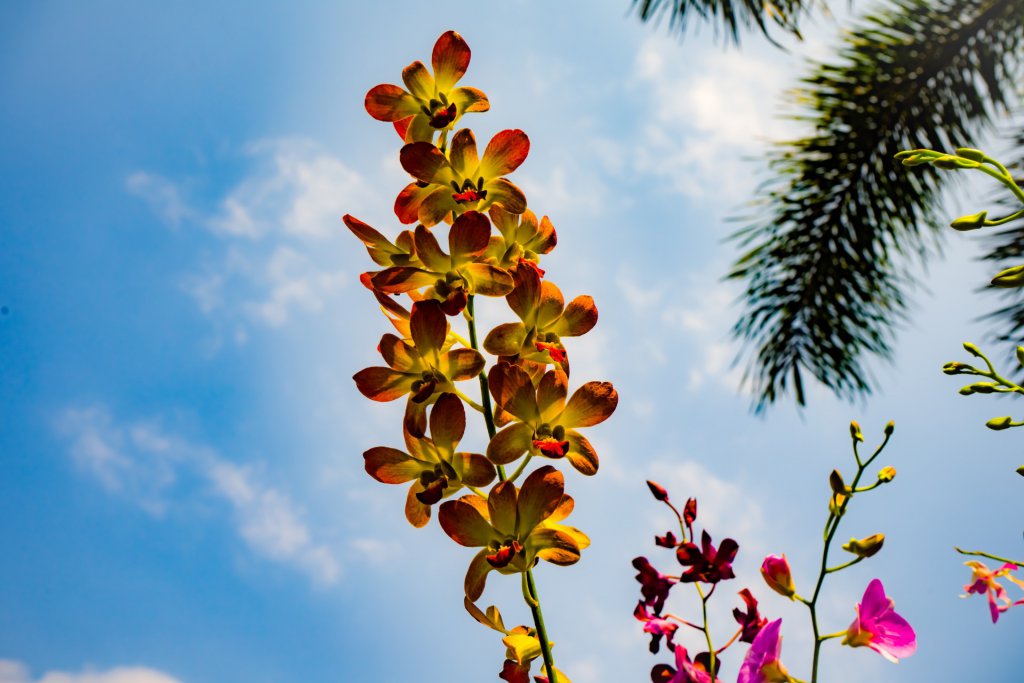
Cymbidiums require a great deal of light and, as long as they don’t get sunburn, can withstand full sun. During the day they should have as much light as possible, with shade only in the warmest part of the day. When growing them inside, place them in an east-facing window if possible.
An easy way to determine whether a boat orchid is receiving the right amount of light is to look at the color of the leaves. Bright green leaves mean a healthy plant that’s getting the correct amount of light. Leaves that are dark green indicate that the plant is not receiving enough light. Pale or yellow leaves mean the plant is receiving too much light.
Watering
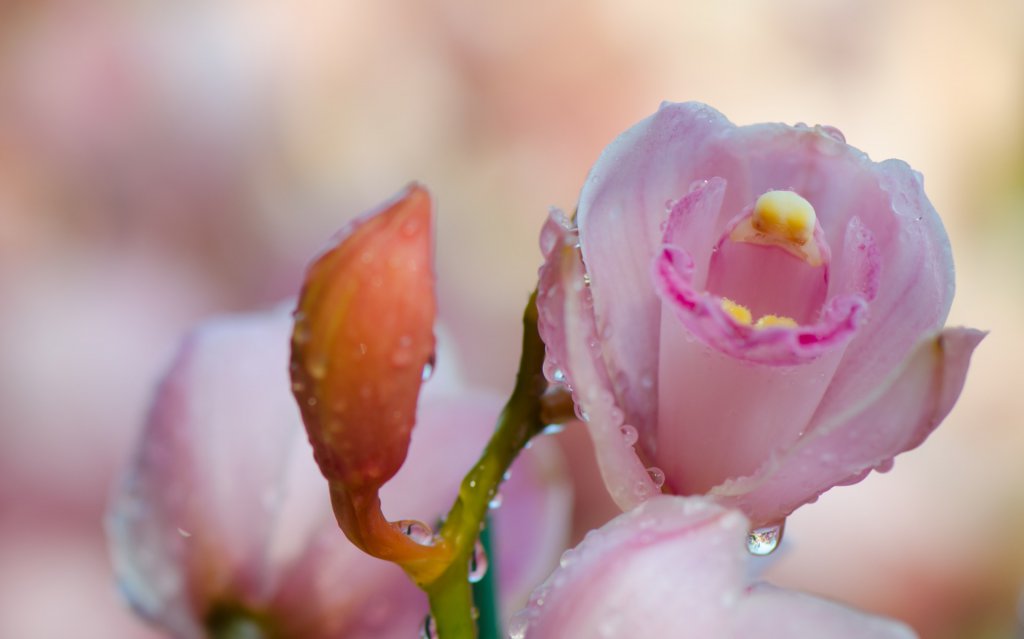
You should water your boat orchids in the morning with lukewarm water. Try to keep your potting medium damp. Watering once a week is a decent general rule of thumb, but how often to water depends on the plant and the plant’s location. In the warmer months, watering can occur slightly more frequently.
It can also be beneficial to spray the leaves of the plant with a fine mist of water once or twice a month. Distilled water is a better choice for watering cymbidium orchids.
These orchids prefer an environment with about 40 to 60 percent humidity. Indoors, a humidifier can help to increase humidity. However, it’s also essential that, in high humidity areas, the area around the plants has good airflow, to prevent rot and disease.
Potting
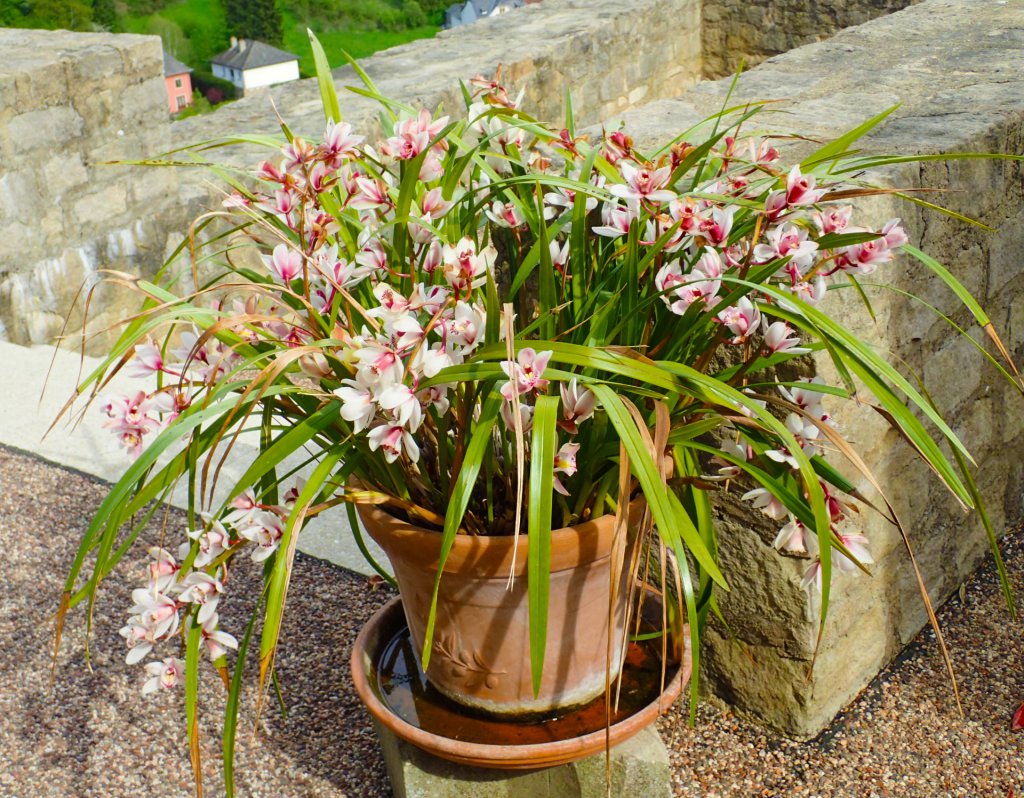
Boat orchids do best in a slightly acidic, water-retaining potting medium. Fir bark mixed with peat moss is a popular choice. You can also incorporate loam, redwood fiber, and dried oak leaves into the medium.
Cymbidiums do best when they are undisturbed, so it’s best to choose a clay pot that will allow for about two years’ growth. Boat orchids actually bloom better when they are in a tight pot. Don’t allow them to spread out. When repotting does become necessary, repot during the spring, or after the plant has flowered.
Cymbidiums are sympodial orchids, which means they have pseudobulbs. It also means they can propagate through division. During repotting, split larger or older plants into sections three to four inches long, with three healthy pseudobulbs each. Each section can be repotted and will become a new plant.
When repotting a cymbidium, make sure not to bury the pseudobulbs under the potting medium.
Flowers
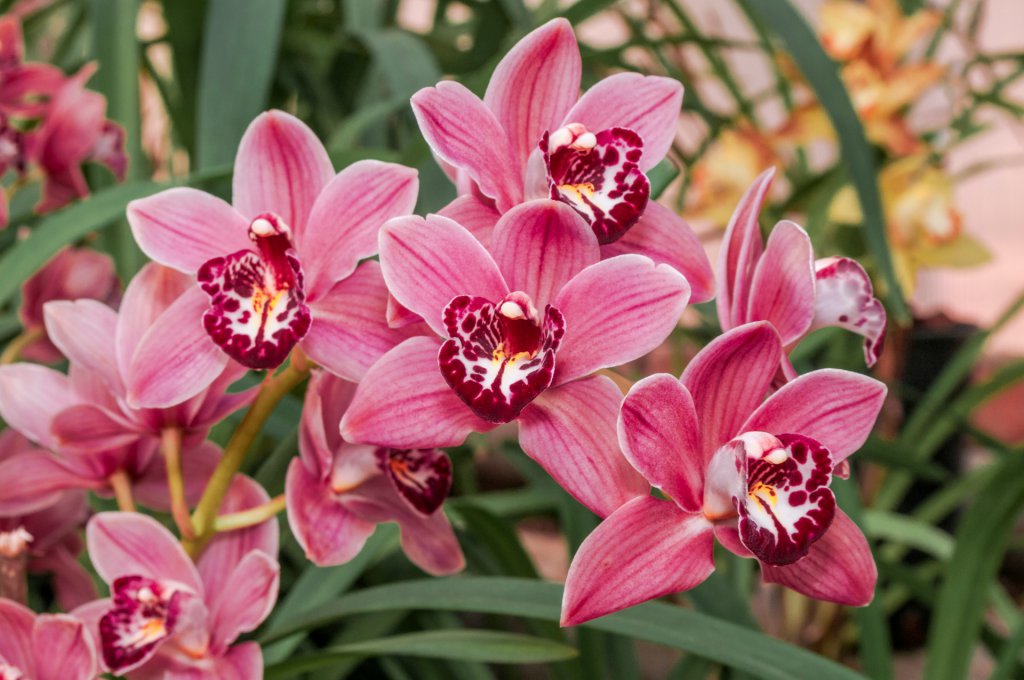
Boat orchids generally bloom in early spring, when night temperatures are cooler. However, some varieties may bloom in the autumn months instead. How long the blooms last depends on the specific species, but generally, the flowers will remain for several weeks, and may even stay for up to two months.
Once a stem has bloomed, it will not flower again. It’s important to trim away dead stems periodically to encourage more flowers the following year.
Potential Diseases
Unfortunately, cymbidiums are susceptible to a variety of diseases.
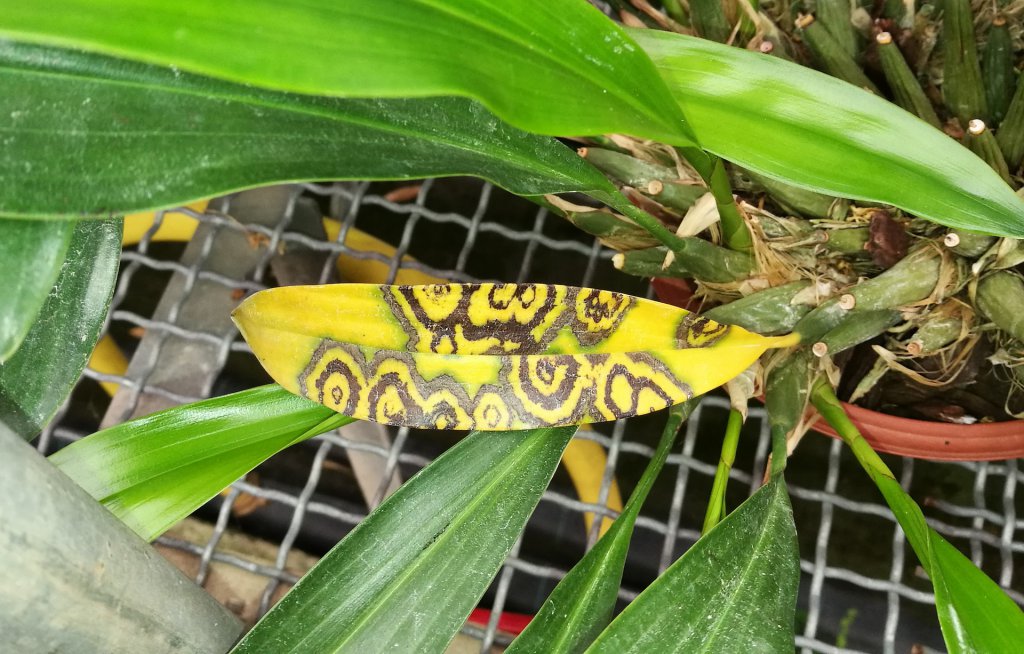
Cymbidium mosaic virus is one of the most common conditions the plant encounters. Interestingly, this virus only occurs in cultivated orchids.
Some of the symptoms of the mosaic virus are white or yellow spots or rings on the plants or brownish areas that look like bruises. Infected plants will also produce fewer flowers and may not grow as well.
Another common cymbidium disease is the odontoglossum ringspot virus. This looks quite similar to Cymbidium mosaic disease, in that it can cause brown patches on the leaves and flowers of the plant.
There are no cures for either cymbidium mosaic disease or odontoglossum ringspot virus. Also, healthy plants that are not displaying symptoms can sometimes be carriers of either disease and can thus spread it to other plants. For these reasons, prevention of disease and preventing the diseases’ spread are the best options.
If you want to prevent diseases, it’s crucial to ensure that plants have good airflow around them. It’s also important to sterilize all cuttings and to use clean, sterile tools when trimming or propagating the plant.
Boat orchids are also susceptible to bacterial infections, as well as to mites. You can prevent mites by frequently misting the undersides of the plant’s leaves.

